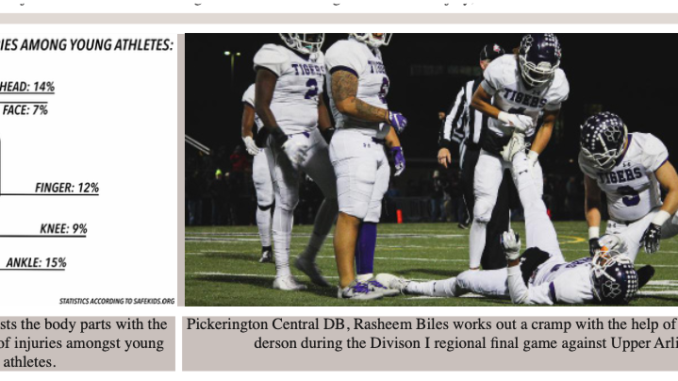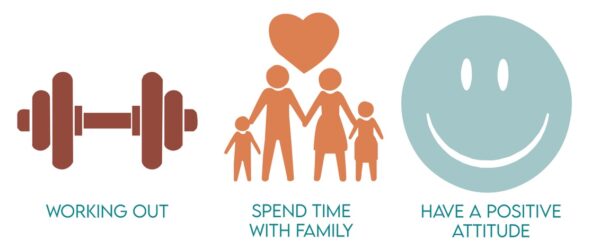
design, photos and graphic: DJ Pelles
It is a cool Friday night. The stands are loud, and the energy is high. The score is 27-24, with just 20 seconds to go. Just one rush to the endzone, and the game is won. The ball is snapped, and the quarterback rushes forward. He’s five yards to the endzone, when suddenly, he is taken out from the side, and falls and breaks a rib.
Injuries are the worst nightmare of any athlete. One misstep or wrong tackle and they could be out for the rest of the season. But, the most common injuries found in student athletes are not at that level.
“The most common injuries that we see are rolled ankles, strained hamstrings and strained quads,” OOHS athletic trainer Tanner Zinni said.
While most of the injuries that are seen in student athletes are these smaller, less significant injuries, some athletes face injuries that may put them on the bench for months on end.
“But what I did was I tore my ACL and my meniscus on both of my knees,” sophomore Bella Leonetti said. Leonetti was playing soccer last year when she twisted her left knee wrong. This year, she went into a tackle with her right knee, when the second injury happened.
And for the past year, Leonetti has constantly been in and out of physical therapy, trying to recover and get back to the strength she needs for playing.
“Last year my recovery was a full year before I could return to soccer, and this year I did a different surgery so it should be nine months,” Leonetti said. “I do physical therapy twice a week, this time around it has been tougher with the pain but I knew what to expect.”
Recovery is a big part of injury prevention. If athletes don’t take the right recovery path and try to re-enter their sport too early, they could risk getting injured again.
“There are some athletes who take the right recovery process, but the vast majority do not… We see some athletes who do try and return to their sport too quickly and this puts them at a higher risk of re-injury,” said.
Along with recovery, there are many ways to just prevent all injuries in general. Keeping a healthy lifestyle at school and at home is a large factor in keeping athletes healthy and ready to play.
Zinni said that eating healthy and getting plentiful amounts of sleep is the best way to prevent and recover from injuries. Doing this allows the body to rest, and recover, so athletes can always be at their prime when playing.
Along with sleeping and nutrition, there are many other things athletes can do to keep their body at their prime. These things consist of conditioning in the weight room, stretching before and after games, taking breaks when needed and don’t play through pain, according to healthychildren.org.
While student athlete injuries cannot be completely stopped, there are still many things that can be done to prevent them. Remember to stay healthy even when not playing sports, and take the right recovery process to lower risks of re-injury.


